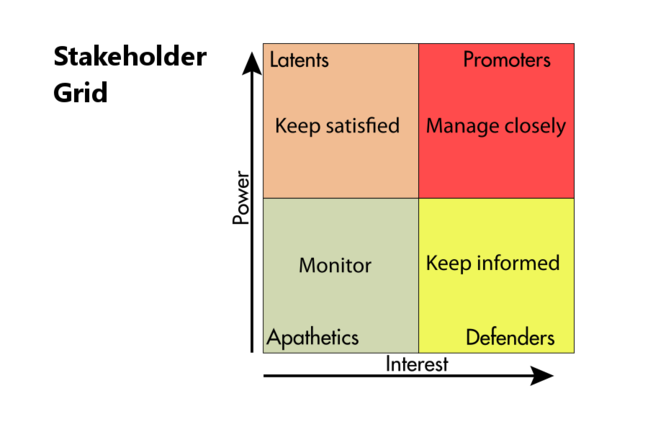Articles & Events, IT
Stakeholder Management, the basics…
We naturally resist change, we like things to stay the same because that is where we are most comfortable. Yet in the business world, organisations evolve and new ways of doing things emerge.
Change is upon us before we realise it and the need to be more and more open to, and embrace change, it has never been greater.
In the words of Heraclitus “change is the only constant in life” .
When change happens in an organisation, it affects anyone who has an interest in the organisation. Those people become the stakeholders; individuals, groups, partners, sponsors, resources, affected by the change. Stakeholders can support or stop a project. During any change project, stakeholder buy-in is the glue that binds a project’s elements together. But how do you get stakeholders on-board with your project?
Here are seven steps on how to gain stakeholder buy-in.

1. Identify who your key stakeholders are:
Take the time to identify the people, groups, sponsors, partners or resources that will be affected by the project or change. The first step in building any stakeholder map is to develop a categorized list of the members of the stakeholder community. Once the list is reasonably complete it is then possible to assign priorities in some way, and then to translate the ‘highest priority’ stakeholders into a table or a picture.
2. Undertake Stakeholder mapping:
Undertake Stakeholder mapping and analysis to assess each stakeholder and the impact they will have on your project. Stakeholder analysis also has the goal of developing co-operation between the stakeholder and the project team, assuring successful outcomes for the project.
The potential list of stakeholders for any project will always exceed both the time available for analysis and the capability of the mapping tool to sensibly display the results, the challenge is to focus on the ‘right stakeholders’ who are currently important and to use the tool to visualise this critical sub-set of the total community.
The most common presentation styles use a matrix to represent two dimensions of interest with frequently a third dimension shown by the colour or size of the symbol representing the individual stakeholders.
Some of the commonly used ‘dimensions’ include:
- Power (high, medium, low)
- Support (positive, neutral, negative)
- Influence (high or low)
- Need (strong, medium, weak)
3. Identify your stakeholder needs and requirements
The stakeholder analysis will help you identify the pojects stakeholders needs and requirements. Note stakeholders will have different needs e.g. the Finance Director will be tracking the project budget and may be looking at what savings the project will make to the Business. The IT Director will want to make sure that the software in an implementation project works when installed. It is important to meet with key stakeholders to discuss their needs and ensure that they feel that their requirements have been properly addressed.
Take time to assess the baseline “buy-in level” of your stakeholders going in to your project by conducting surveys. This will also help you understand stakeholder concerns as well as identify potential pockets of resistance. If you can, it is a good idea to try and group together broad requirements. Tailoring your communication to each stakeholder group ensures that you communicate effectively how the change will affect each stakeholder. Develop strategies for both your project allies and enemies, so that you can keep everyone on-side and focused on a positive outcome.
4. Engage stakeholders head, heart and hands
It is a good idea to try and engage with stakeholders on various levels and through the different stages - head, heart and hands.
- Frequent targeted communications help the head to understand, intellectually, why the change is necessary and what the benefits will be
- Next, stakeholders come to believe in their hearts that the change is the right thing to do for the company and themselves personally. If they can see how the change will benefit themselves they are more likely to accept the change
- Finally, the hands must become competent through training and practice to bring the change to fruition
Try to identify at least one person on your team who is “on the hook” for stakeholder buy-in. This person may have a background in employee communication, change management, or large-scale programme management.
5. Senior Management
Lack of support from senior executives sometimes happens because they are under time pressures and simply don’t have enough time to devote to your project. However, lack of buy-in from Senior Management is cited as one of the most common reasons projects fail, so helping them to on-board them is critical. Ensure you are having good quality, honest conversations and actively engaging with senior leaders.
To help support senior leaders, why not ask them how you can help them free up some of their time, or make a list of specific actions they can take to ensure buy-in at all levels of the organisation. Presentations or ‘town-hall’ style meetings are a great way for senior executives to communicate the benefits of the project to the rest of the organisation. It builds trust and demonstrates to people that they are on-board with the project.
6. Track and measure progress:
To see what’s working and what’s not, conduct stakeholder interviews and surveys throughout the course of the project and adjust along the way.
For example, questions such as “I would like to ask for your feedback about the project. I value your opinion on how you believe we can work more effectively and deliver a better product / service to you. Would that be ok? Are there any aspects you feel we have overlooked? Which other tips and suggestions do you have for how we can improve?”
Share the feedback and progress with the stakeholder groups and address any issues that may arise.
7. Undertake continuous review of the stakeholder community:
Stakeholders have the greatest influence in the initial stage of the project however you should undertake a continuous review of the stakeholder’s positions and expectations. This should keep you on-track and maintain the buy-in. Creating a stakeholder-aware culture in an organisation requires a structured approach, skilful management and time. As a continuous improvement process, stakeholder management requires understanding and support, or awareness, from everyone in the organisation ranging from the CEO to a short-term contractor.
buy the stakeholder bundle for from: https://pmp-practitioners.com/product/stakeholder-register-and-analysis

